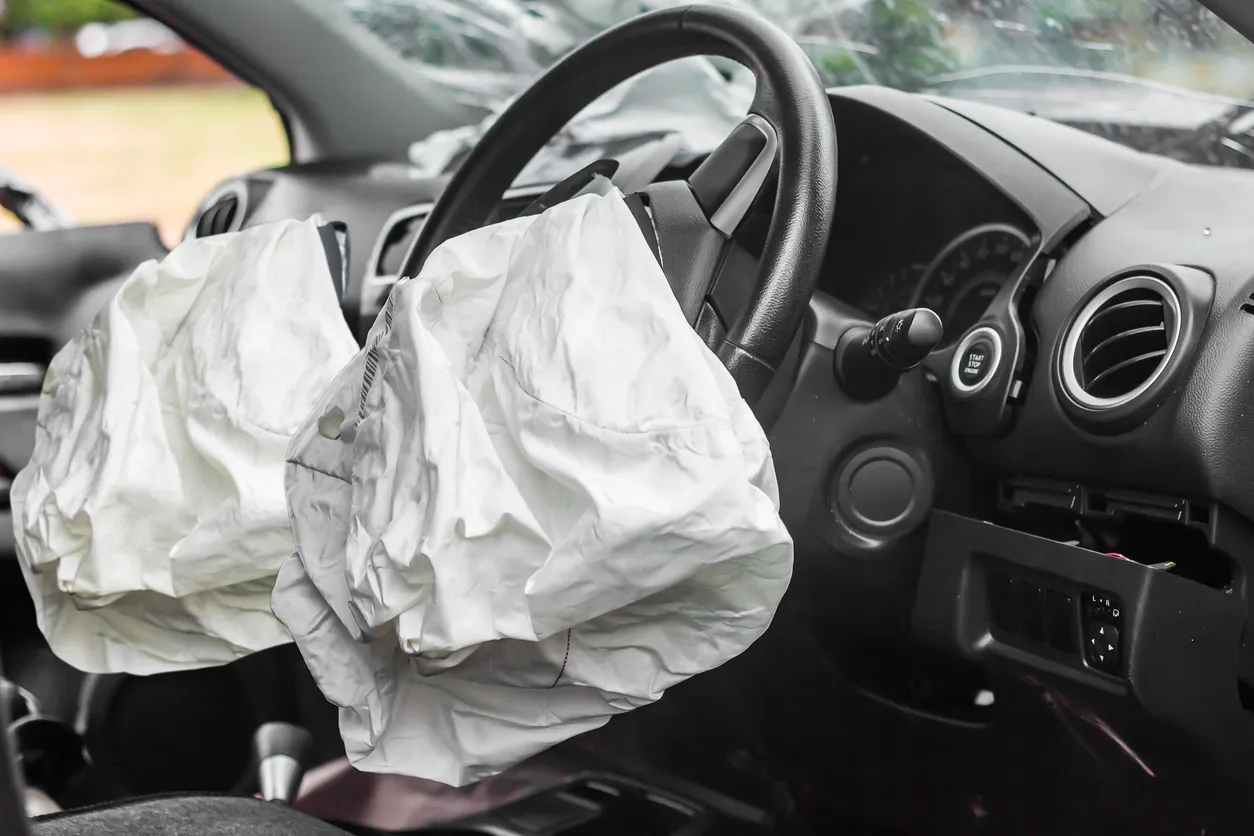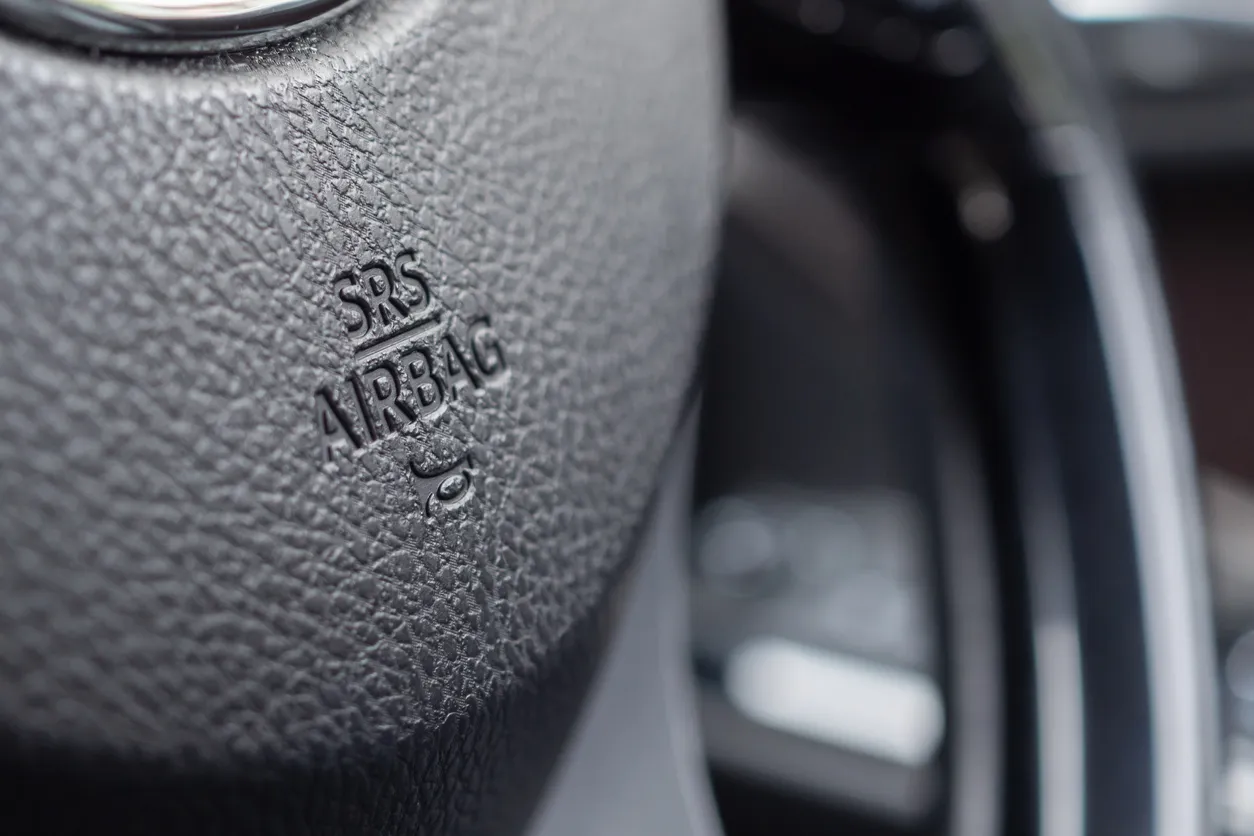Are Airbags Safe? Everything You Need To Know

One of the most crucial safety elements in a car is the airbag system. These protective systems have been around for a while and have shown to be successful in lowering the seriousness of injuries in automobile accidents. In order to gain a deeper knowledge of this critical safety component, the experts here at GoodCar want to explore everything one needs to know about automotive airbags, including their efficacy, various varieties, risk factors, and how they operate in most vehicles.
What Are Airbags?
Car airbags are safety devices that are designed specifically to deploy quickly in the event of a significant collision. Airbags systems are designed to help protect the occupants of a vehicle from injury by providing a cushioned surface to absorb the force of an impact. Airbags work by deploying from the dashboard, steering wheel, and other parts of the car to provide a barrier between the occupant and the various hard surfaces of the car's interior.
How Do Airbags Work?
Sensors positioned all throughout the car are in charge of controlling the deployment of airbags. These sensors pick up on unexpected changes in direction or speed, such as those that take place during a collision. The airbags deploy when the airbag control module in the automobile receives a signal from the sensors indicating an abrupt change in speed or direction.
The airbags inflate very fast when they are launched, usually in less than a second. The airbags of most cars are constructed of a unique fabric that is robust yet flexible enough to inflate quickly. The danger of harm is decreased when the airbags deploy because they provide a more malleable buffer between the driver and occupants and the unforgiving surfaces on a normal vehicle's interior.
What Are SRS Airbags?
Advanced airbags,also called SRS (Supplemental Restraint System) are made to offer greater safety in the case of a collision. SRS airbags operate by deploying at various speeds based on how severe the crash was. Moreover, they provide a tailored level of protection for each passenger in the car by adjusting the inflation level dependent on the weight of the occupant.

SRS airbags are becoming widespread as a standard safety feature and are often present in most contemporary automobiles. In the case of an accident, these upgraded airbag systems are intended to offer even better protection to passengers, thus further lowering the chance of injuries.
Types of Airbags
There are several different types of car airbags that are designed to protect different parts of the body in the event of a collision. The most common types of airbags include:
- Frontal Airbags: A frontal airbag is designed to protect the head and chest of the driver and front-seat passenger in the event of a head-on collision. These airbags are typically located in the dashboard, steering wheel, or side of the car.
- Side Airbags: A side airbag is designed to protect the torso and pelvis of the driver and passengers in the event of a side-impact collision. These airbags are typically located in the side of the seat or door.
- Knee Airbags: A knee airbag is designed to protect the knees of the driver and front-seat passenger in the event of a collision. These airbags are typically located under the dashboard.
- Curtain Airbags: A curtain airbag is designed to protect the head of the driver and passengers in the event of a side-impact collision. These airbags are typically located in the roof of the car.
Are Airbags Safe?
It has been demonstrated that using automobile airbags may significantly lessen the degree of injuries sustained in collisions. Since they were originally introduced in the early 1980s, frontal airbags alone have reportedly saved more than 50,000 lives in the United States, according to the National Highway Traffic Safety Agency (NHTSA).
The nature and intensity of the crash, the location of the individuals within the car, and whether or not they were wearing seat belts at the time of the impact can all affect how effective airbags are.
It's crucial to remember that airbags are not intended to take the place of seat belts. The best method for safeguarding car occupants in the case of an accident is still using a seat belt. Airbags are designed to work in conjunction with seat belts to provide an additional layer of protection.
Airbag Injuries

Although airbags have been shown to be quite successful in reducing the seriousness of injuries in auto accidents, they can also inflict harm on their own. Airbag injuries can happen for a variety of reasons, including occupant placement issues, seat belt violations, and airbag design flaws.
Some common airbag injuries include:
- Facial Injuries: Airbags can cause facial injuries such as bruises, cuts, and burns due to the force of the deployment.
- Chest Injuries: Airbags can cause chest injuries such as broken ribs, punctured lungs, and other internal injuries due to the force of the deployment.
- Arm and Hand Injuries: Airbags can cause arm and hand injuries such as broken bones, sprains, and lacerations due to the force of the deployment.
- Eye Injuries: Airbags can cause eye injuries such as corneal abrasions and retinal detachment due to the force of the deployment.
To reduce the risk of airbag injuries, it's important to follow proper safety guidelines. Occupants should always wear seat belts, sit upright with good posture and maintain a high level of awareness of road and traffic conditions.
Airbags Are Meant to Keep Passengers Safe When Used Properly
In the case of any serious collision, car airbags act as a crucial safety device that may significantly lower the chance of injuries. The system functions by instantly erecting a barrier between the occupant and the inside of the car's harsh surfaces. The head, chest, torso, pelvis, and knees of the occupants are all protected by various types of airbags in the case of a collision in modern vehicles. While they offer a relatively high level of effectiveness, airbags should not be used in place of seat belts. The best method for safeguarding car occupants in the case of an accident is still using a seat belt.
FREE Vehicle Search
- Accidents
- Problem Checks
- Title Records
- Recalls
- Values
- Specs
-
InfoPay, Inc. (dba GoodCar) is an Approved NMVTIS Data Provider
-
-












































